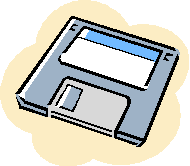It is the holiday season, and I can’t help myself. Get ready for another “Christmas themed” posting. In the less than 7 days since Thanksgiving, I have come across on the television 3 showings of various iterations of A Christmas Carol, By Charles Dickens. This could possibly be one of the most re-made holiday films in history as well as a “recycled” theme for numerous other films, usually those sappy romantic comedies.
 Why do we love it? It is a tale of introspection, realization and redemption. When confronted with the true reality of his life, Scrooge transforms himself “overnight”. That is why we love it!
Why do we love it? It is a tale of introspection, realization and redemption. When confronted with the true reality of his life, Scrooge transforms himself “overnight”. That is why we love it!
Well, we all know that in the “life” of medical billing, an overnight transformation of any sort is completely impossible. The deadlines for “mandatory” claims rules like 5010 and ICD-10 are pushed back over and over again. A 100% paperless medical office, I haven’t seen one of those yet.
Even though it has not happened overnight, significant changes have been made and are on the horizon in the medical billing world.
So follow along as we reminisce about the “old days”. (Notice I did not say “Good old days”. I think things have gotten much better. I hope you agree.) We will take stock of our current situation and wax hopeful or commiserate about the upcoming 2014 and beyond.
 The visit by the “Ghost of Christmas Past” demonstrates the hardships and heartbreak suffered by Scrooge in his much earlier years. My medical billing memories might not go back in time quite as far and would qualify as neither true hardships nor heartbreak. I will confess there was a real sense of nuisance and inconvenience.
The visit by the “Ghost of Christmas Past” demonstrates the hardships and heartbreak suffered by Scrooge in his much earlier years. My medical billing memories might not go back in time quite as far and would qualify as neither true hardships nor heartbreak. I will confess there was a real sense of nuisance and inconvenience.
Before the advent of medical billing software, medical office staffs in offices around the country were forced to manually complete claim forms for submission to payers. I guess I could have been thankful the physician who owned the practice forked up the money for a “word processing” style electric typewriter.
 This typewriter had a small amount of built in memory and the ability to be programmed slightly for some formatting requirements. It also was able to save a “created” document onto a 3” memory disk. I managed to utilize these functions to calculate the proper spacing for completing the necessary fields in the claim form and store this information.
This typewriter had a small amount of built in memory and the ability to be programmed slightly for some formatting requirements. It also was able to save a “created” document onto a 3” memory disk. I managed to utilize these functions to calculate the proper spacing for completing the necessary fields in the claim form and store this information.
Each month, I would take the previous month’s “form” for patient “A”, update the dates of service and services rendered, put a form in the typewriter and print it. One patient down, and who knew how many left to go. Oh and where did I get the charge information? It was written on those old- style hand written ledger cards.
 We used those same cards to enter the insurance and patient payments as they were received. If you have been around a medical office for a long time, then you know exactly the ones I am talking about. We also worked with those old “pegboard” payment receipts and a calendar year appointment book. A “quick search” for the next available appointment meant flipping from page to page!
We used those same cards to enter the insurance and patient payments as they were received. If you have been around a medical office for a long time, then you know exactly the ones I am talking about. We also worked with those old “pegboard” payment receipts and a calendar year appointment book. A “quick search” for the next available appointment meant flipping from page to page!
Far less traumatizing than Scrooge’s situation, however the refusal of the physician to change with the times and get a computerized billing system, made me leave that job!
 As the clock stuck two, Scrooge moved from Christmas past to Christmas present, so now we will also.
As the clock stuck two, Scrooge moved from Christmas past to Christmas present, so now we will also.
Thankfully, we currently have medical billing software, with automated payment posting, electronic claims submission, real time eligibility and appointment scheduling. All of these are very common in today’s medical billing world and represent some of good things we encounter in our day.
But in keeping with the grim nature of the visions experienced by Scrooge, we should mention the less than positive experiences a medical biller can be subjected to.
 Authorizations: This process of obtaining approval from the payer or a third party reviewer for requested procedures and services can be quite time consuming and frustrating. Although many can be performed via online sites, often times the submission and review of medical records is still required. The timeline on the review can be as much as 7 – 10 business days. These types of delays are very stressful for patients and the office staff that have the unfortunate responsibility to communicate the authorization status to those patients. It gets even worse when a request is denied. A stressed patient can quickly become irate and “blame” the messenger. Most authorization departments do follow standard medical guidelines and protocols, but we all know a patient can have a unique set of circumstances that may not fall neatly into a protocol. Keeping a cool head and learning to work with the payers is a crucial skill required by today’s medical office staff.
Authorizations: This process of obtaining approval from the payer or a third party reviewer for requested procedures and services can be quite time consuming and frustrating. Although many can be performed via online sites, often times the submission and review of medical records is still required. The timeline on the review can be as much as 7 – 10 business days. These types of delays are very stressful for patients and the office staff that have the unfortunate responsibility to communicate the authorization status to those patients. It gets even worse when a request is denied. A stressed patient can quickly become irate and “blame” the messenger. Most authorization departments do follow standard medical guidelines and protocols, but we all know a patient can have a unique set of circumstances that may not fall neatly into a protocol. Keeping a cool head and learning to work with the payers is a crucial skill required by today’s medical office staff.
 Denials: This is the #1 enemy of the Accounts Receivables manager. I do believe it is unlikely that payers have blanket policies to automatically deny a claim, but there are rules that must be followed. Those rules include CCI and MUE edits, NCDs and LCDs, and payer medical policies. If you ignore those, you are asking for denials. Education and information are the best tools in prevention and sometimes, you are right, those don’t even work. As most claims are processed electronically these days, denials can simply be a “computer glitch”, so taking time to truly investigate the denial reason codes will provide the proper strategy for your appeal.
Denials: This is the #1 enemy of the Accounts Receivables manager. I do believe it is unlikely that payers have blanket policies to automatically deny a claim, but there are rules that must be followed. Those rules include CCI and MUE edits, NCDs and LCDs, and payer medical policies. If you ignore those, you are asking for denials. Education and information are the best tools in prevention and sometimes, you are right, those don’t even work. As most claims are processed electronically these days, denials can simply be a “computer glitch”, so taking time to truly investigate the denial reason codes will provide the proper strategy for your appeal.
 Uninsured/under insured/patient collections: No one enjoys asking sick people for money. I am sure this falls to the bottom of many “to do” lists and I cannot blame you. In 2009 it was estimated that 48.6 million people in the US were uninsured. There are also those who can only afford such limited coverage that many medical services end up being their full financial responsibility.
Uninsured/under insured/patient collections: No one enjoys asking sick people for money. I am sure this falls to the bottom of many “to do” lists and I cannot blame you. In 2009 it was estimated that 48.6 million people in the US were uninsured. There are also those who can only afford such limited coverage that many medical services end up being their full financial responsibility.
One such situation I have seen is a “Hospital only” policy. It will cover inpatient treatment, but all outpatient services are the patient’s responsibility. Think about how many services are provided as outpatient: chemotherapy, radiation therapy, physical therapy, many surgical services, those are a lot of very expensive exclusions. It is a tough situation, but I feel it is best dealt with openly with the patient. Discuss the costs up front and make a plan for payment. I know of no doctor who turns away a patient for inability to pay, it is our very tough job to try to walk that fine line.
When confronted with these real life difficulties, keeping a positive attitude like hopeful Tiny Tim, can allow us all to be calm and persevere.
 His next visitor, the “Ghost of Christmas Future” presented to Scrooge his fate, a lonesome and celebrated death, if he failed to adjust his path and change his ways. That is a pretty harsh reality to face.
His next visitor, the “Ghost of Christmas Future” presented to Scrooge his fate, a lonesome and celebrated death, if he failed to adjust his path and change his ways. That is a pretty harsh reality to face.
The harsh reality in medical billing is things change, sometimes for better and sometimes for worse and we are unable to do anything to stop it. We are not like Scrooge; we are not in complete control of our path in medical billing. There are numerous outside forces: government regulations, payer policies, physician needs, and the ever present patient factor.
 Let’s see the changes that are in our near future and those that are looming a little further off in the distance.
Let’s see the changes that are in our near future and those that are looming a little further off in the distance.
January 2014 will see the initial implementation of the new HCFA 1500 claim form that has been updated to accommodate up to 12 diagnosis codes. CMS has set an April 1, 2014 deadline for its mandatory use. It does seem most large payers are following the same timeline, but as we all know, some payers may not yet be “ready” for the new forms. ICD-10 becomes mandatory October 1, 2014 so any straggler payers will have no more excuses at that point.
In regards to the ICD-10 mandate, we have all had many years to get ready, yet I fear few feel really confident about the change. ICD-10 is not really new; it has been utilized in countries around the world for years and does provide a more thorough “picture” of the patient’s condition. Physicians evaluate the whole patient, now billers and coders will do the same thing.
Tied to the use of ICD-10 is the concept of potentially transitioning to a “flat rate” type of medical reimbursement, instead of our current fee for service model. As this concept is also tied to a “Value Based” care delivery system, I see the advantages. Standardizing the reimbursement could standardize the level of care patients receive. It could eliminate the variations due to socio-economic status, geographical location, etc. We would emphasize optimum patient care at the center, which in the long run has proven to lower costs. This is a scary concept for US physicians and certainly not anything that will happen overnight, but I feel no one can disagree that better care for lower cost is a win-win situation for all involved.
So, just as Scrooge was not already doomed, I do not think we are either. I do believe in evaluation of your current path and making the right choices for the success of your medical practice. I do believe making bad choices, can in time, doom a medical practice. Therefore, we must learn from the past, appreciate the present and embrace the future as best we can.


